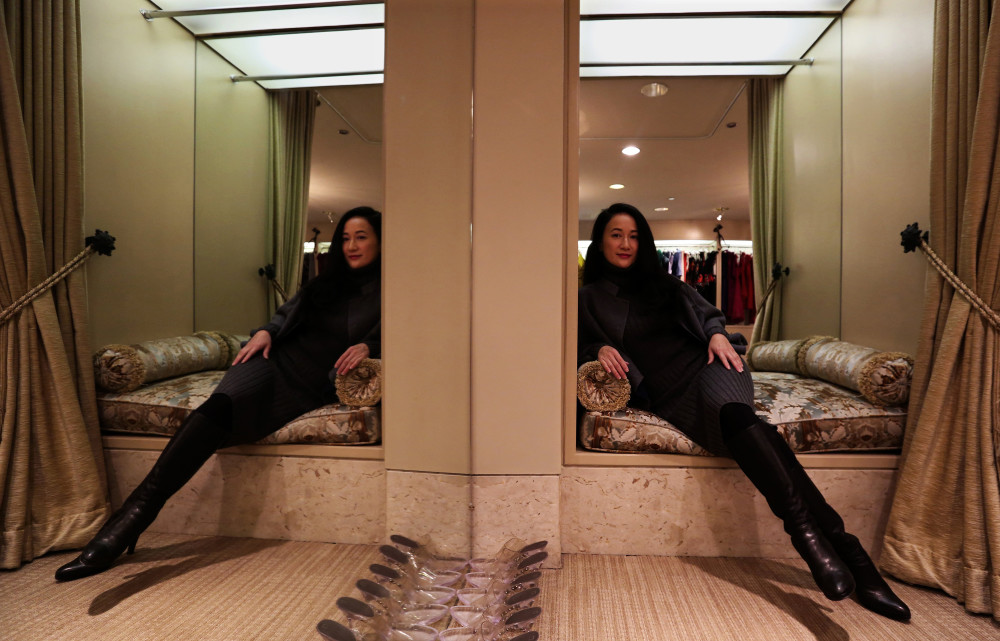By Moira Macdonald
The Seattle Times
WWR Article Summary (tl;dr) For women in business with a focus on fashion, an airline doesn’t always come to mind. That is why this is such an interesting profile of Luly Yang, the new uniform designer for Alaska Airlines. It’s not all about style for Yang, from flight attendants to pilots to customer-service agents, the need of employees are varied. Right now she is in the process of surveying the Alaskan Airlines workers regarding their concerns (Among them: A pilot explained that the current uniform belt rubs uncomfortably against the five-point seat-belt harness while flight attendants suggested deeper pockets in their aprons and more stretch in their trousers.)
SEATTLE
The skies are about to get a lot more stylish, at least, on Alaska Airlines.
Fashion designer Luly Yang, whose international couture and ready-to-wear business is based in downtown Seattle, has a unique assignment: designing new uniforms for the entire Alaska workforce, from flight attendants to pilots to customer-service agents to maintenance technicians. The partnership with Alaska, announced last month, will be a two-year process, with the company’s new look expected to debut in 2018.
“It’s such an amazing project for a designer to be commissioned to do,” said Yang in an interview at her Seattle studio, where the vast skirts of her trademark formal and bridal gowns burst exuberantly from the racks. “It’s a long-term project, and it’s a challenging one because you’re answering to many different needs. The uniform needs to of course reflect the brand. … [Alaska] has a certain persona and a certain personality, and you want that to come through.
“You also want it to function for all the different work groups. The need they have for each garment is different. That’s why we spend months just listening, getting surveys, doing focus groups, before we even begin to decide what it’s going to look like.”
That’s the phase Yang, and a local team hired specifically for this project, is now in: gathering information, about what Alaska’s 12,000 employees like best and least about their current uniform, how they feel about individual pieces (for example, hats), how the specific needs of their jobs inform their clothing preferences.
There’s long been a link between the fashion and aviation worlds. In the late 1960s, Emilio Pucci raised eyebrows by designing a wildly mod, neon-colored uniform line, complete with space-age bubble helmets, so as to preserve coiffures on a windy tarmac, for Braniff International Airways.
buy abilify generic https://buynoprescriptiononlinerxx.net/abilify.html over the counter
More sedately, Pierre Balmain designed elegant print sarong dresses for Singapore Airlines in 1968, based on the traditional kebaya; those uniforms, largely unchanged, are still worn on the airline today.
Christian Lacroix created chic designs for Air France in 2005, still in use, and Vivienne Westwood went less classic for her sleek, blood-red uniforms for Virgin Airlines in 2013. And here in the U.S., designer Zac Posen was recently hired to spark up Delta Air Lines’ look; his designs will debut, like Yang’s, in 2018.
According to Sangita Woerner, Alaska’s vice president of marketing, this is the first time the company has partnered with a fashion designer. “What Luly will bring to the table is those little design details that maybe a customer might not even notice, but a flight attendant will notice,” she said. “To create a sense of pride for what you put on every day.”
For Yang, who specializes in custom couture creations and limited-edition ready-to-wear, this project means designing a complete line of clothing, with each employee group receiving a collection of separates. A female flight attendant, Yang said, might have “a couple of dresses, trousers, a skirt, a couple of different kinds of blouses, maybe a knit cardigan or sweater. Quite a few pieces, different combinations.”
As for fabrics, Yang and her group are looking at “many different technical fabrics that would be good for breathability, for stretch, for longevity, for care … It’s challenging because it’s not a fashion line where it comes in this season and out next. This has to last.”
For color, Yang is guided by the recent Alaska redesign of its planes and logo, which features shades of blue, turquoise and pale green, but says she’s not strictly restricted to those hues.
“It’s important that [the uniforms] look cohesive, with their new refreshed brand,” she said. “Some of the colors are beautiful graphically but you don’t want to use too much of it on the garment, you have to think about different complexions.” Her goal: “a system that looks good on most people.” (She’ll also be dealing with more sizes than a typical designer would offer: The women’s range, said Woerner, is 0 to 28, and the line will also include maternity garments.)
Once the process of surveying the employees is complete, Yang and her team will move on to focus groups. She’s already getting plenty of feedback: After a recent Alaska flight, Yang was surrounded by flight attendants and pilots eager to make suggestions.
(Among them: A pilot explained that the current uniform belt rubs uncomfortably against the five-point seat-belt harness; flight attendants suggested deeper pockets in their aprons, and more stretch in their trousers.) “Every flight I’m on, I have pages of notes!” Yang said.
Then comes the actual design process: drawings, concepts, samples, testing. In a year or so, keep your eyes open when flying Alaska; you might see an employee road-testing new garments.
Though it’s just the beginning of a long project, Yang is clear on what the end of the road should be. “It’s my goal that [the employees] are proud to put [the uniform] on, that they want to wear it, and when they wear it they feel polished and professional and as if they represent the company in the best way possible,” she said. “I want them to look forward to putting it on in the morning.”














































































































































































































































































































































































